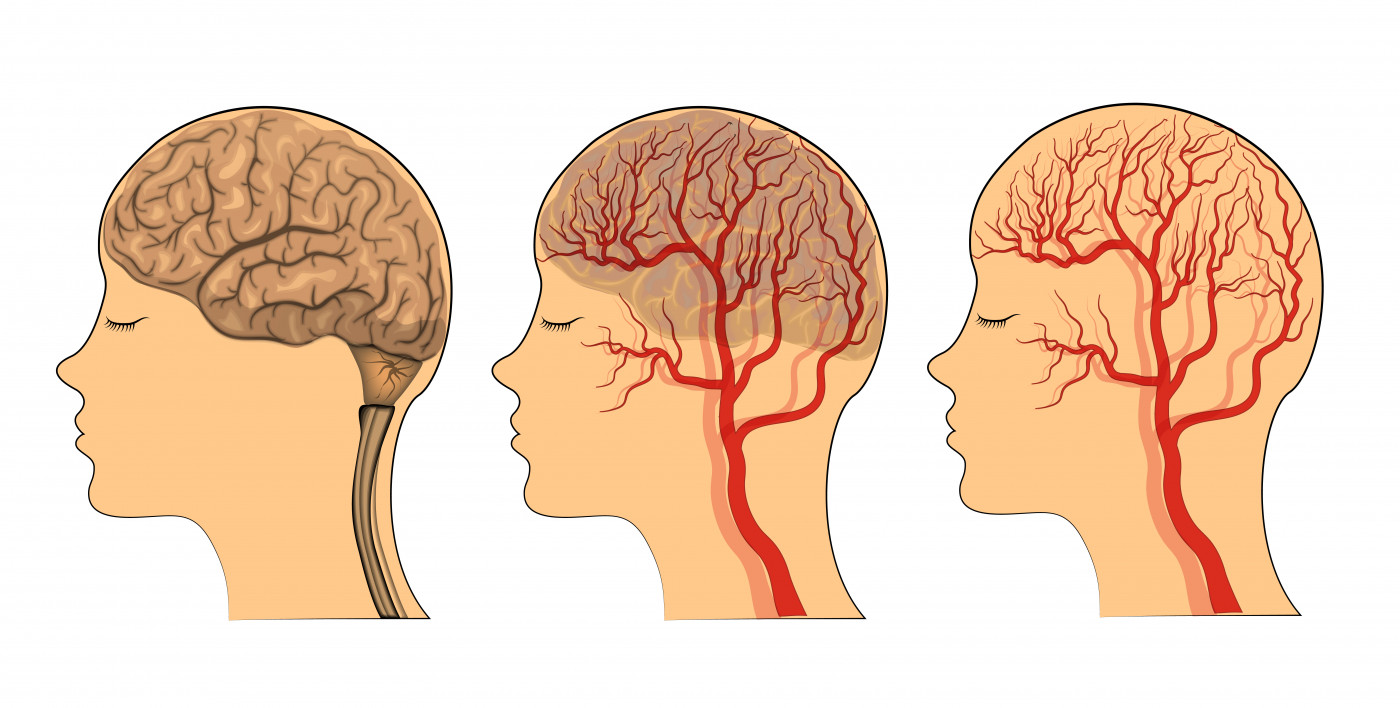Atypical Headaches Can Be Initial Symptom of Vascular EDS, Case Report Suggests

Atypical headaches on one side of the head, caused by tearing of the walls of the carotid artery — the artery that supplies oxygenated blood to the brain — can be the only initial symptom of vascular Ehlers-Danlos syndrome (EDS), a case report suggests.
The study, “Trigeminal Autonomic Cephalalgias Manifested As The Only Initial Symptom Of Ehlers–Danlos Syndrome Type IV,” was published in the Journal of Pain Research.
People with vascular EDS usually have fragile and translucid skin that bruises easily, particular facial features (including prominent eyes, thin face and nose, and lobeless ears), and blood vessels that break easily.
In rare cases, vascular EDS can cause dissection, or tearing, of the layers that form the carotid artery, leading to headaches.
Researchers in China have now reported the case of a 27-year-old man for whom atypical headaches were the only initial symptom of vascular EDS type IV.
The man went to the hospital because he had been having pain in his right eye, had conjunctival injection (enlargement of conjunctival vessels), and a drooping eyelid (ptosis) over the previous month. The doctors diagnosed him with conjunctivitis and discharged him after prescribing appropriate treatment.
After two weeks, however, the patient returned to the hospital because the treatment did not resolve the symptoms, and because he was having severe headaches on the right side of his head. He was then admitted to the emergency neurology department and suspected of having trigeminal autonomic cephalalgia, a headache syndrome.
Through several imaging tests, the team found a dissection in the carotid artery that diminished blood flow in the affected area of the head. The man started treatment with antiplatelet therapy, which prevents blood clot formation and was discharged.
A month later, he went back to the hospital with strong abdominal pain. Lab exams showed he had high white blood cells and C-reactive protein, which indicate inflammation.
Imaging exams showed dissection in the arteries that supply the liver and spleen with oxygenated blood. As a result, the man’s right kidney and spleen were not receiving enough blood. He started treatment with antiplatelets, anticoagulants, and low-dose glucocorticoids, which alleviated the pain.
Doctors performed imaging exams of the abdomen at three and six months after treatment and found no damage to the arteries of internal organs. One year after his first hospitalization, the patient said he no longer had pain, although he still had some conjunctivitis and a drooping right eyelid.
The patient had a history of tension headaches and high blood pressure, and his father and grandmother had a history of bleeding in the brain (intracerebral hemorrhage). Based on this, the doctors decided to perform a genetic screen to see if a hereditary condition could explain the recurrent artery dissections.
Results showed that the patient had a mutation (c.799-1G>A) in the COL3A1 gene, which led to a final diagnosis of vascular EDS. This mutation had not been previously described in research.
“Our report expands the genetic spectrum and clinical manifestations of [vascular] EDS, and provides a significant implication for the diagnosis of [vascular] EDS when the initial symptom manifests as TACs [trigeminal autonomic cephalalgias],” the researchers wrote.
The team recommended that young patients with atypical headaches and carotid artery dissection should be tested for EDS, especially if there is a family history of similar symptoms.






